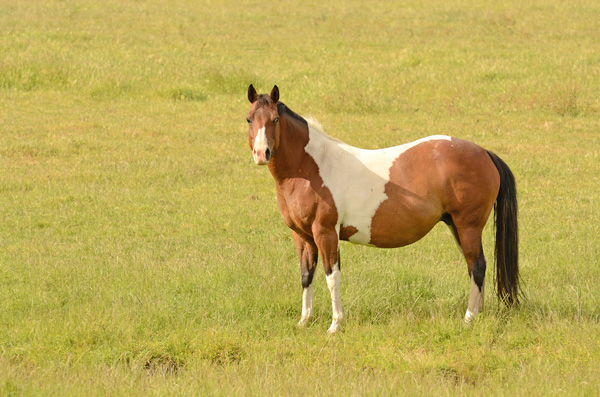The equine athlete commonly experiences joint disease due to traumatic injury or predictable wear-and-tear. To keep a competitive horse active, it is often necessary to offer therapeutic care in many forms. A very common approach is to inject an injured joint with anti-inflammatory medications.

Because this is an invasive procedure that involves entering a joint with a needle, sterility is important to a successful outcome. Your veterinarian will prepare the injection site with a careful surgical scrub and will load sterile medications into sterile syringes. In many cases, the horse will be sedated so he isn’t inclined to move and disrupt the sterile field during the procedure.
The specific material injected into the joint depends on the horse’s particular ailment and how long the problem has been present. Typically, a joint is treated with an anti-inflammatory medication like a corticosteroid (triamcinolone or betamethasone), which lessens inflammation and associated pain. This is important because inflammation, particularly of the synovial membrane lining the joint, is accompanied by mediators that degrade cartilage if left unchecked. In some cases, polysulfated glycosaminoglycans (PSGAGs) are used instead of corticosteroids to achieve a similar objective.
In addition, it is common practice to combine hyaluronic acid (HA) with the steroid to provide additional anti-inflammatory effects and to stimulate normal lubricating properties within the joint. And, often a very small dose of antibiotic is injected along with these medications to minimize the risk of infection.
Biologic therapies–IRAP (interleukin-1 receptor antagonist protein), PRP (platelet-rich plasma)–are also being implemented to manage chronic osteoarthritis by targeting specific inflammatory mediators.
Following a joint injection, the horse may be turned out, but it is usually restricted from forced exercise for a few days before being returned to riding pursuits.


